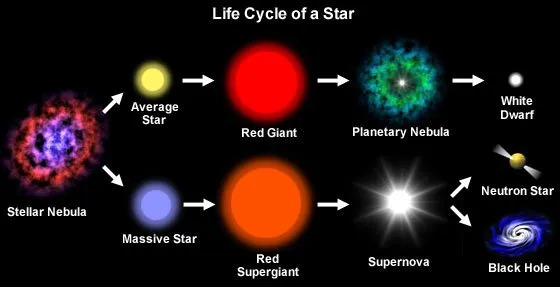ForumIAS announcing GS Foundation Program for UPSC CSE 2025-26 from 19 April. Click Here for more information.
ForumIAS Answer Writing Focus Group (AWFG) for Mains 2024 commencing from 24th June 2024. The Entrance Test for the program will be held on 28th April 2024 at 9 AM. To know more about the program visit: https://forumias.com/blog/awfg2024
What is the News?
An international team has reported a unique phenomenon where they saw the white dwarf losing its brightness in 30 minutes. These gaps in brightness have been previously reported, but the process usually takes place over a period of several days to months.
What is a White Dwarf?
White dwarfs are stars that have burned up all of the hydrogen they once used as nuclear fuel.
A typical white dwarf is half the size of our Sun and has a surface gravity 100,000 times that of Earth
Formation of White Dwarf

Main sequence stars including the sun are formed from clouds of dust and gas drawn together by gravity. However, once a star runs out of its fuel, it dies and becomes compact. The lifetime of a star depends on its mass.
The most massive stars with eight times the mass of the sun or more will never become white dwarfs. Instead, at the end of their lives, they will explode in a violent supernova, leaving behind a neutron star or black hole.
Smaller stars, such as the sun, will eventually swell up into red giants. After that, the stars shed their outer layers into a ring known as a planetary nebula. The core that is left behind will be a white dwarf, a husk of a star in which no hydrogen fusion occurs.
What is the Switch on and off Phenomena?
The white dwarf discussed here is part of a binary system called TW Pictoris, where a star and a white dwarf orbit each other. The two objects are so close to each other that the star transfers material to the white dwarf.
As this material approaches the white dwarf it forms an accretion disk or a disk of gas, plasma, and other particles around it.
As the accretion disk material slowly sinks closer towards the white dwarf, it generally becomes brighter. There are cases when the donor stars stop feeding the white dwarf disk. However, the reasons for this are still not clear.
When this happens, the disk is still bright as it “drains” material that was previously still there. It then takes the disk about 1-2 months to drain most of the material.
However, TW Pictoris drop in brightness in 30 mins was totally unexpected, and it may be due to the process called magnetic gating.
Note: Magnetic gating happens when the magnetic field is spinning so rapidly around the white Dwarf it creates a barrier, disrupting the amount of matter the white dwarf can receive.
What is the significance of these findings?
This discovery will help us understand the physics behind accretion – how black holes and neutron stars feed material from their nearby stars.
Source: This post is based on the article “Explained: What astronomers learnt, and didn’t, from seeing a white dwarf ‘switch on and off” published in Indian Express on 25th October 2021.




